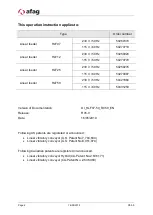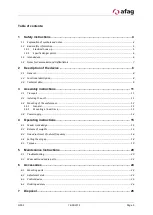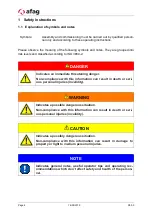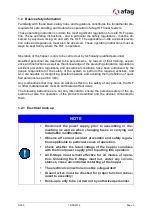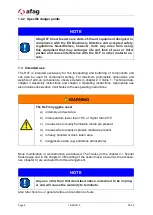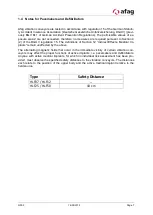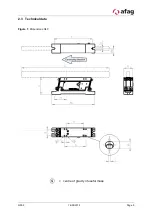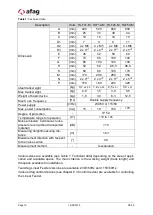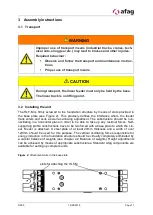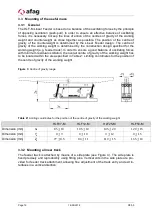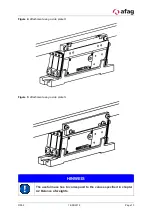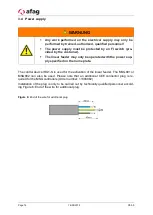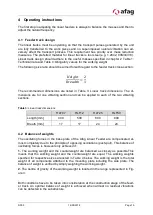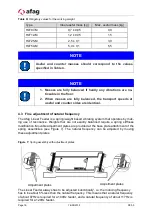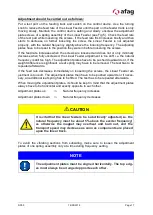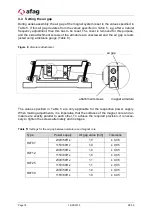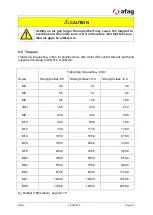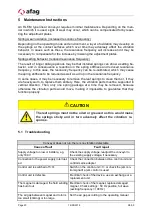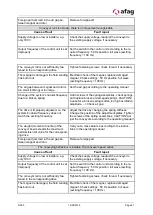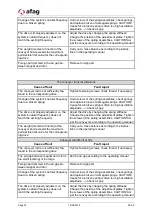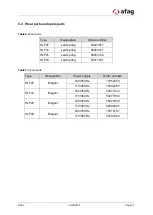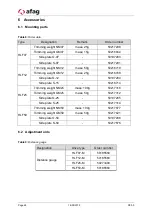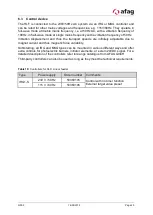
Page 12
16/05/2019
R05.0
3.3
Mounting of the useful mass
3.3.1
General
The HLF-M Linear Feeder is based on a balance of the oscillating forces by the principle
of opposing oscillation (push-pull). In order to ensure an effective balance of oscillating
forces, it is necessary to keep the lines of action of the centres of gravity of the working
weight and counterweight as close together as possible. The position of the centre of
gravity of the counterweight is determined by the Linear Feeder design. The centre of
gravity of the working weight is determined by the construction design specified for the
working weight (e.g. feeder track). In order to ensure a good balance of oscillating forces
with minimum residual oscillation, the overall centre of gravity of the working weight has
to be located within the area specified in Table 2: Limiting coordinates for the position of
the centre of gravity of the working weight.
Figure 3:
Centre of gravity range
Table
2:
Limiting coordinates for the position of the centre of gravity of the working weight
HLF07-M
HLF12-M
HLF25-M
HLF50-M
Dimension [mm]
X
s
85 ± 10
105 ± 10
135 ± 20
120 ± 15
Dimension [mm]
Y
s
0 ± 9
0 ± 10
0 ± 12
0 ± 15
Dimension [mm]
Z
s
77 ± 8,5
84 ± 11
110 ± 15
165 ± 10
3.3.2
Mounting a linear track
The feeder track is attached by means of a side plate (see Figure 4). The side plate is
fixed precisely and reproducibly using fitting pins. Vertical slits in the side plate are pro-
vided for feeder track attachment, allowing fine adjustment of the track entry and exit in-
terfaces in a vertical direction.


